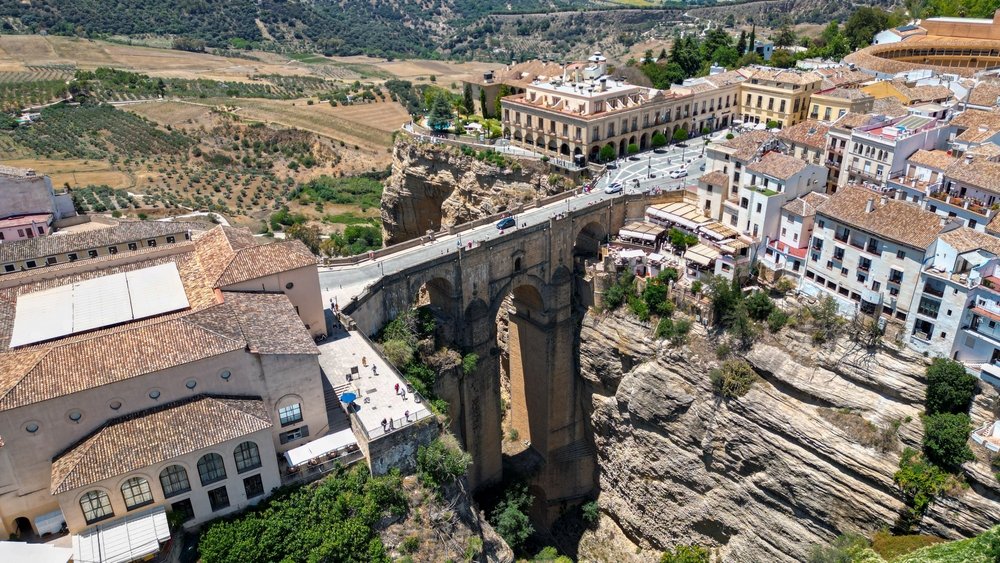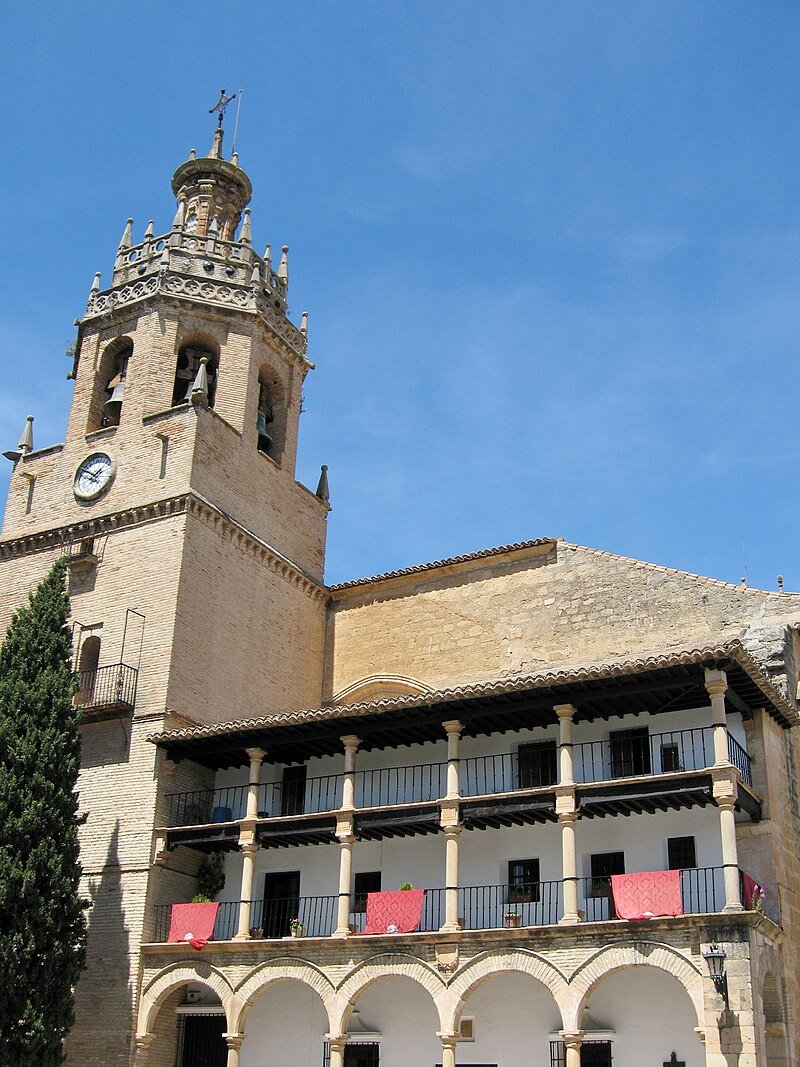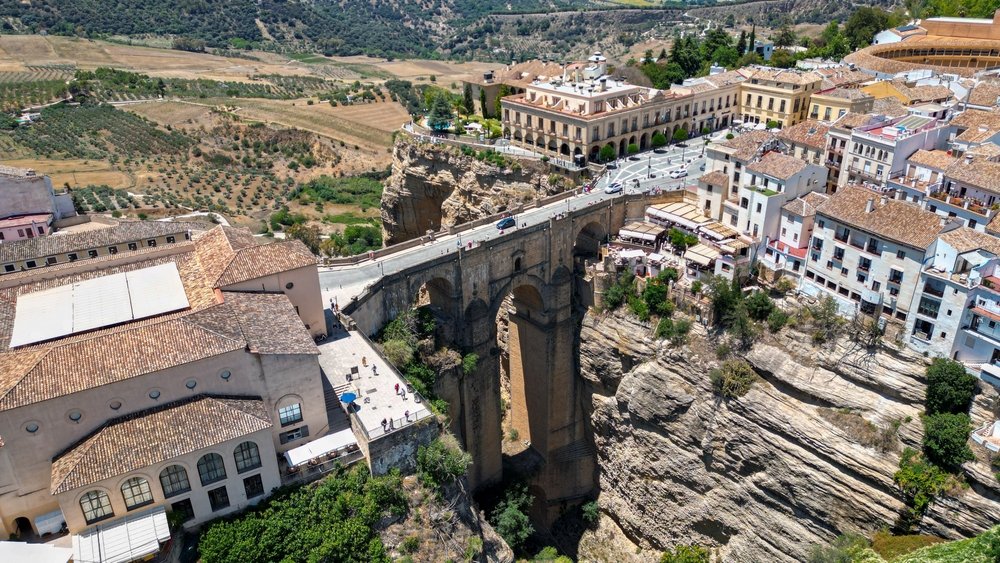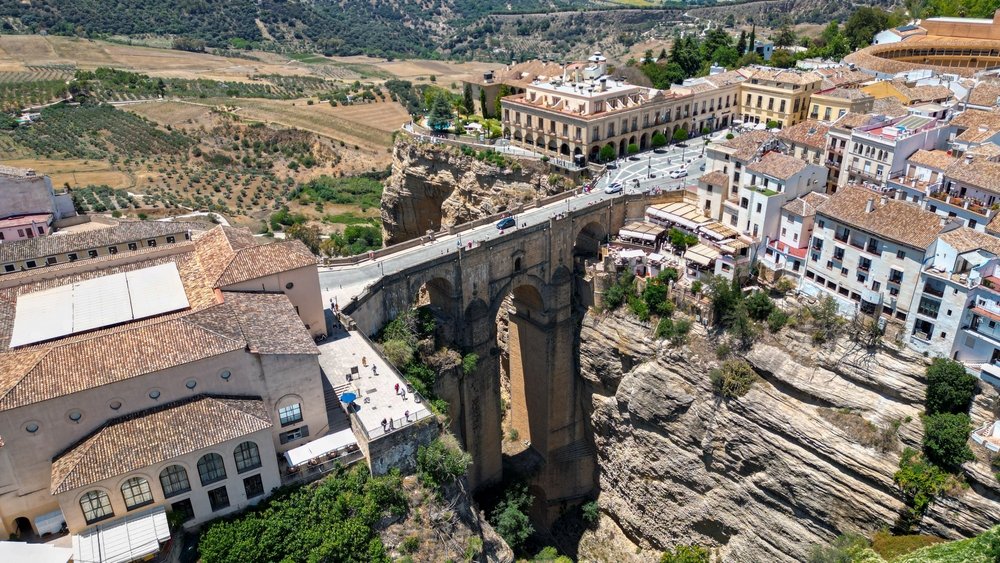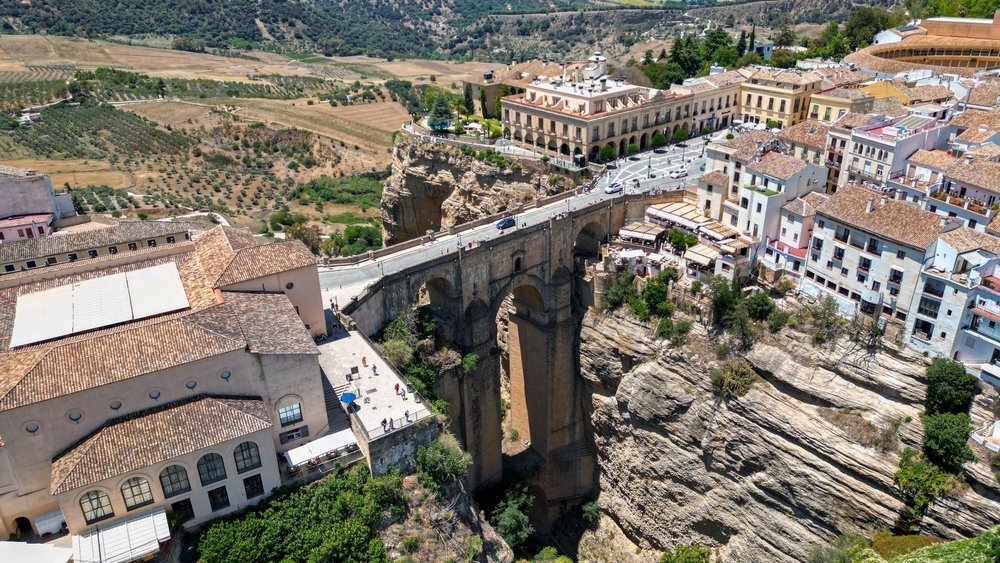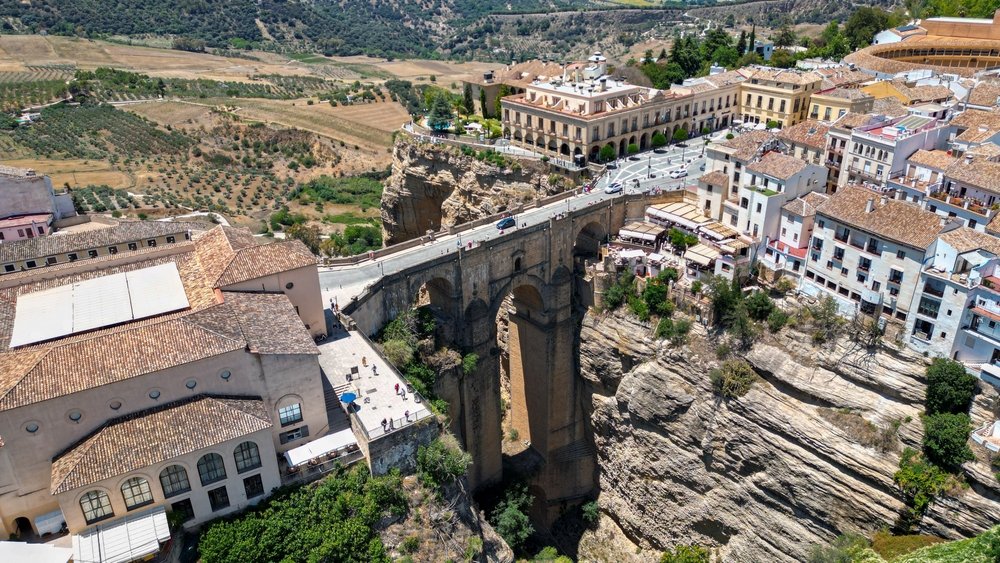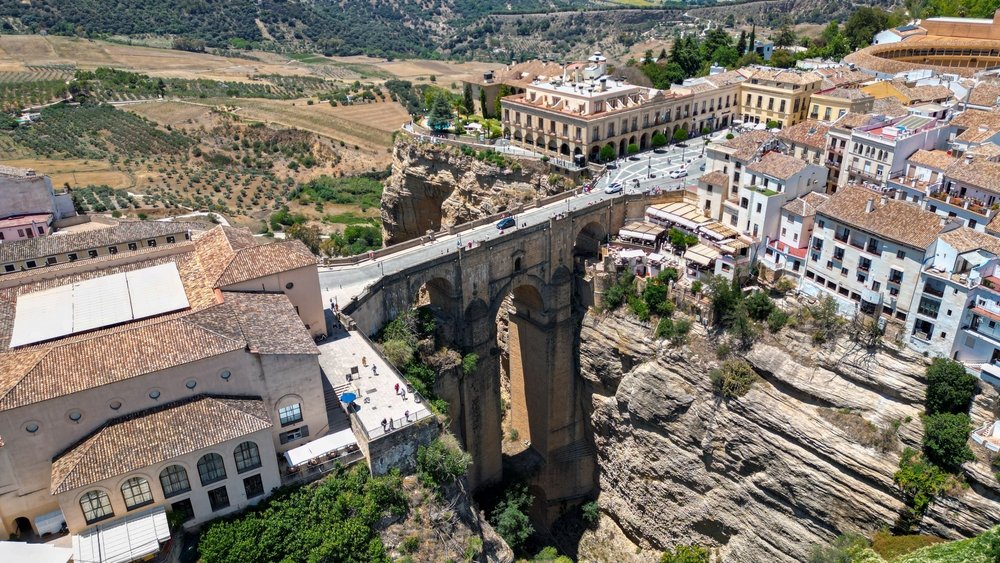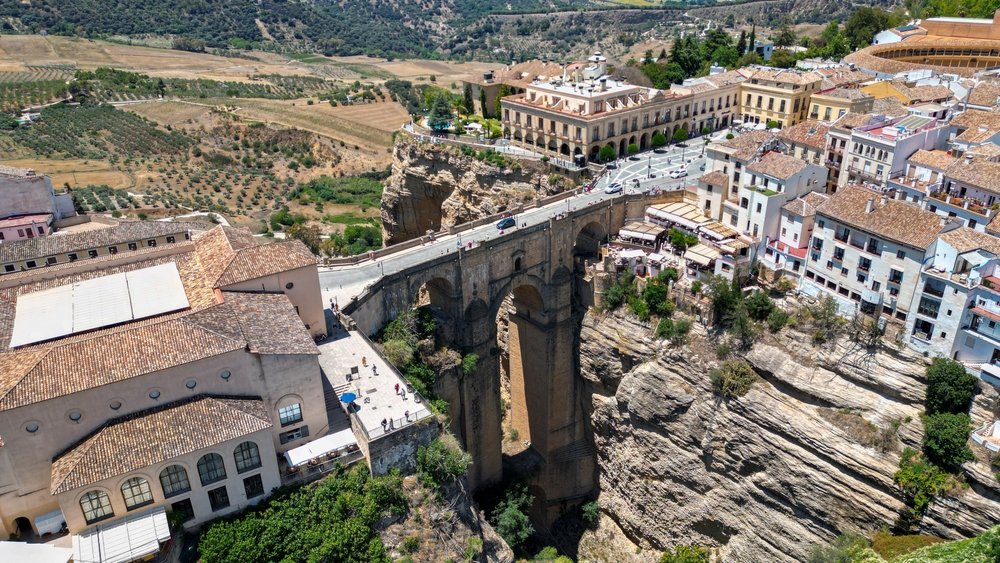The construction of the church began shortly after the Christian troops reconquered Ronda in 1486. Over more than two centuries, the building underwent various phases, reflecting two predominant architectural styles: Gothic and Mannerist.
Gothic Part
The first construction phase, corresponding to the Gothic style, is found in the lower part of the temple. This section features three naves separated by pointed arches supported by clustered pillars with continuous capitals. These arches create a spacious and open area, interrupted only by the central choir, which has a wooden choir stall carved with figures of saints and a large lectern. Originally, this part was covered with wooden coffered ceilings, although it currently has semispherical vaults on decorated pendentives, a work from the 17th century.
Mannerist Part
The second construction phase, corresponding to the Mannerist style, affects the churchs apse, which was rebuilt after being destroyed by an earthquake in 1580. This monumental reconstruction continued until approximately 1720. In this phase, fluted columns with high bases were added, supporting a triumphal arch with an imperial shield and ornate Corinthian capitals, crowned by an entablature decorated with cartouches and a prominent cornice.
Exteriors
The exterior façade of the church is notable for its brick tower with a square base and octagonal upper sections, topped with Gothic tracery and pinnacles, featuring a small dome from the 16th century. The tower stands on the former minaret of the mosque, reconstructed after being struck by lightning in 1523. In the early 17th century, a triple gallery was added to allow views of the events in the large adjacent square. This gallery consists of a semicircular arcade on the ground floor and two upper lintelled levels, all with stone columns topped by a tiled roof.
Other Elements
The main altar features an altarpiece from the late 18th century, made of unpainted wood, with baluster columns and topped with a lantern.
Cultural Heritage
The Church of Santa María la Mayor is listed as a Cultural Heritage Site and has been registered as a monument in the Gaceta de Madrid since 1931
